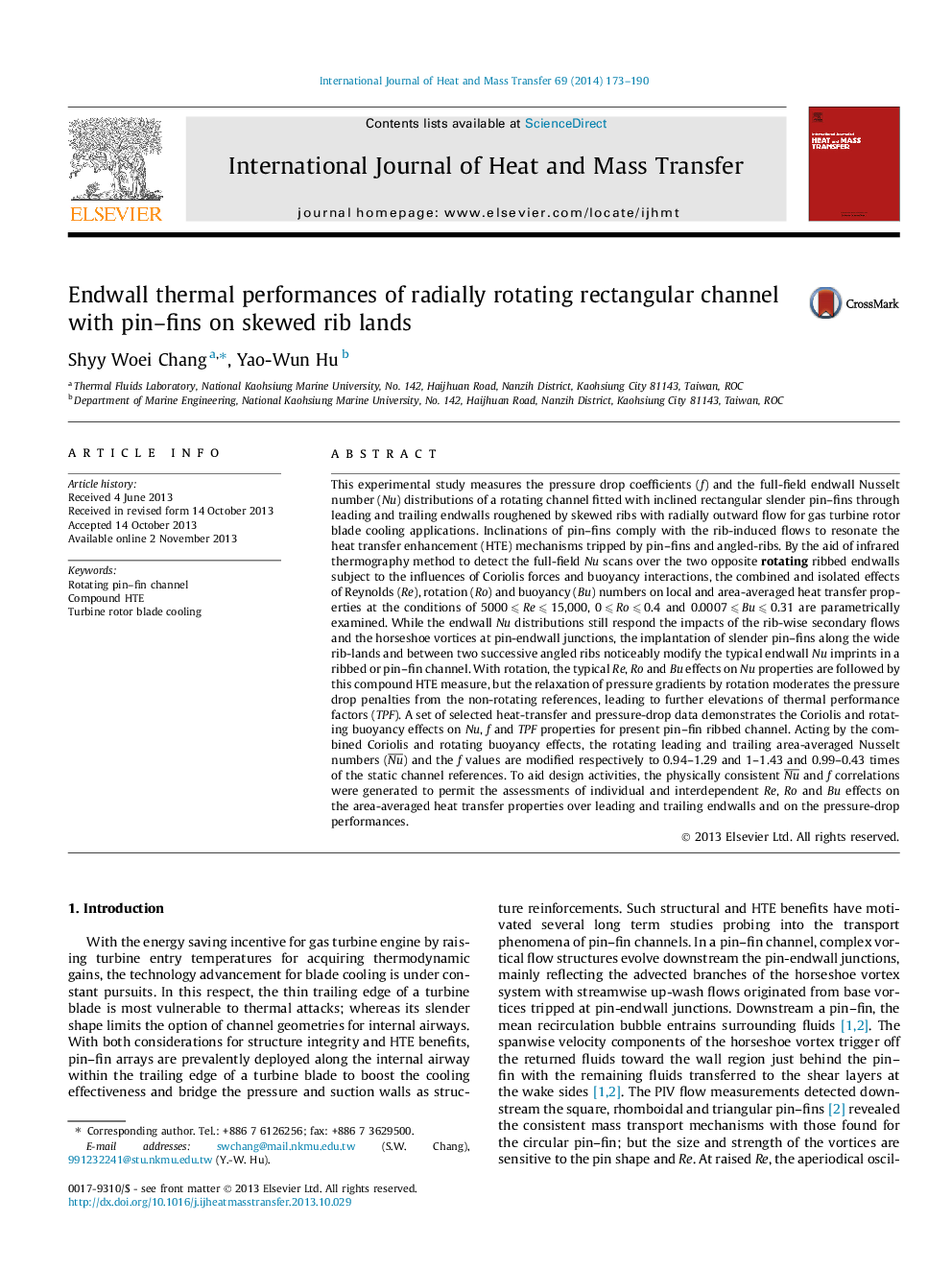| Article ID | Journal | Published Year | Pages | File Type |
|---|---|---|---|---|
| 658105 | International Journal of Heat and Mass Transfer | 2014 | 18 Pages |
This experimental study measures the pressure drop coefficients (f) and the full-field endwall Nusselt number (Nu) distributions of a rotating channel fitted with inclined rectangular slender pin–fins through leading and trailing endwalls roughened by skewed ribs with radially outward flow for gas turbine rotor blade cooling applications. Inclinations of pin–fins comply with the rib-induced flows to resonate the heat transfer enhancement (HTE) mechanisms tripped by pin–fins and angled-ribs. By the aid of infrared thermography method to detect the full-field Nu scans over the two opposite rotating ribbed endwalls subject to the influences of Coriolis forces and buoyancy interactions, the combined and isolated effects of Reynolds (Re), rotation (Ro) and buoyancy (Bu) numbers on local and area-averaged heat transfer properties at the conditions of 5000 ⩽ Re ⩽ 15,000, 0 ⩽ Ro ⩽ 0.4 and 0.0007 ⩽ Bu ⩽ 0.31 are parametrically examined. While the endwall Nu distributions still respond the impacts of the rib-wise secondary flows and the horseshoe vortices at pin-endwall junctions, the implantation of slender pin–fins along the wide rib-lands and between two successive angled ribs noticeably modify the typical endwall Nu imprints in a ribbed or pin–fin channel. With rotation, the typical Re, Ro and Bu effects on Nu properties are followed by this compound HTE measure, but the relaxation of pressure gradients by rotation moderates the pressure drop penalties from the non-rotating references, leading to further elevations of thermal performance factors (TPF). A set of selected heat-transfer and pressure-drop data demonstrates the Coriolis and rotating buoyancy effects on Nu, f and TPF properties for present pin–fin ribbed channel. Acting by the combined Coriolis and rotating buoyancy effects, the rotating leading and trailing area-averaged Nusselt numbers (Nu¯) and the f values are modified respectively to 0.94–1.29 and 1–1.43 and 0.99–0.43 times of the static channel references. To aid design activities, the physically consistent Nu¯ and f correlations were generated to permit the assessments of individual and interdependent Re, Ro and Bu effects on the area-averaged heat transfer properties over leading and trailing endwalls and on the pressure-drop performances.
